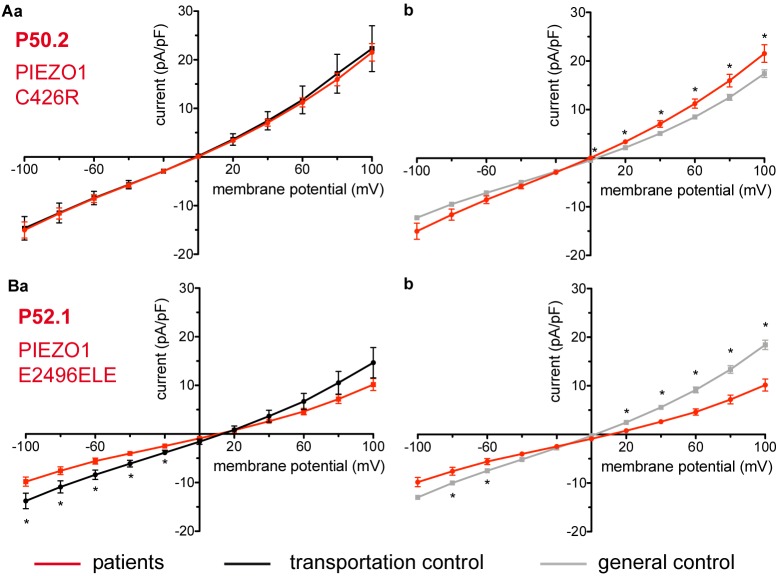FIGURE 8.
Whole-cell recordings of ion currents from RBCs of healthy donors and HX patients. Compared are the I/V curves of P50.2 (n = 14) with its own transportation control C50 (n = 7) (Aa) as well as with a general control (n = 175) (Ab). Comparison of capacitance of P50.2 with control capacitances gave no difference with the general or the transportation control (0.73 pA/pF P50.2 vs. 0.80 pA/pF transportation control; p > 0.05; 0.73 pA/pF P50.2 vs. 0.69 pA/pF general control; p > 0.05). Compared are the I/V curves of P52.1 (n = 20) with its own transportation control C52 (n = 11) (Ba) as well as with a general control (n = 175) (Bb), where n denotes the number of cells. No changes were observed in capacitance either with the transportation (0.75 pA/pF P52.1 vs. 0.62 pA/pF C52; p > 0.05) or with the general control (0.75 pA/pF P52.1 vs. 0.69 pA/pF general control; p > 0.05). Currents were elicited by voltage steps from –100 to 100 mV for 500 ms in 20 mV increments at Vh = –30 mV. Data are expressed as mean current density ± SEMs. Significant differences are determined based on an unpaired t-test with ∗ representing p < 0.05. Mutations below patients numbers are designated as amino acid substitutions in the respective protein.

